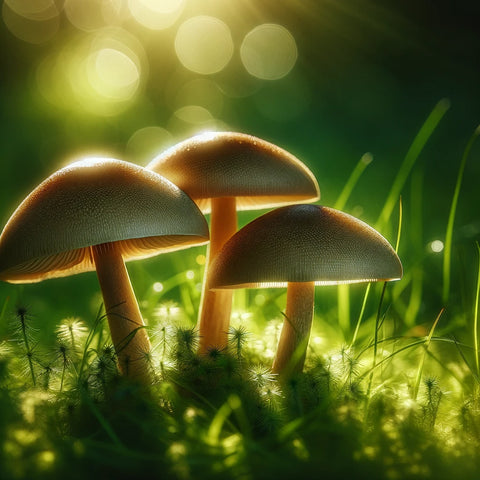In the quest for sustainable materials, an unlikely hero has emerged from the forest floor: mushroom mycelium. This remarkable material is not just a byproduct of the natural world but a potential game-changer in eco-friendly design and manufacturing.
What is Mushroom Mycelium?
Mycelium is the vegetative part of a fungus, consisting of a network of fine white filaments (hyphae). It's essentially the root system of mushrooms, found beneath the soil or within decaying plant matter. Think of it as the underground internet of the fungal world, connecting and sustaining life.
The Production Process: From Spore to Material
Mycelium is cultivated by feeding it agricultural byproducts like sawdust or hemp hurds. As it grows, the mycelium binds these substrates together, forming a dense, three-dimensional matrix. This growth process is relatively quick, taking only a few days to weeks, depending on the desired product's density and size.
A Myriad of Mycelium Products
The versatility of mycelium is astounding. It's been used to create:
- Eco-friendly Packaging: An alternative to polystyrene foam.
- Fashion and Footwear: German designer Emilie Burfeind's sneakers showcase mycelium's potential in textiles.
- Furniture: With properties akin to wood and foam, it’s ideal for sustainable furniture design.
- Leather Alternatives: Mycelium-based leather is cruelty-free and biodegradable.
Why Mycelium is a Green Giant
Mycelium's eco-credentials are impressive:
- Biodegradable: It breaks down naturally, leaving no harmful residues
- Low Environmental Impact: Requires less water and energy to produce than conventional materials
- Reduces Waste: Utilizes agricultural byproducts that would otherwise go to waste
The Sneaker Revolution: Mycelium in Fashion
Emilie Burfeind’s sneakers are a perfect example of mycelium’s potential in fashion. She 3D printed the sneaker's sole using mycelium and designed an upper from a mycelium-based textile. These sneakers represent a fusion of technology and nature, offering a glimpse into a sustainable fashion future.
The Early Stages of Mycelium
While mycelium's potential is vast, it's still in the early stages of development. As production methods evolve and scale, mycelium could significantly reduce our reliance on less sustainable materials. The current excitement around mycelium is just the tip of the iceberg, with much more innovation to come.
Potential Drawbacks
Despite its promise, mycelium has some limitations:
- Durability: It may not be as long-lasting as some traditional materials
- Production Scale: Large-scale production methods are still developing
- Climate Sensitivity: As a natural material, it may be susceptible to climate variations
A Unique Aspect of Mycelium
One fascinating aspect of mycelium is its natural ability to break down pollutants, including plastics and toxins, through a process called mycoremediation. This not only highlights its role in creating eco-friendly products but also its potential in environmental cleanup efforts.
In Conclusion
Mycelium stands at the forefront of sustainable material innovation. Its applications, from biodegradable packaging to cruelty-free leather and eco-conscious footwear, show a future where materials are not just used but also give back to the environment. As we delve deeper into the possibilities of mycelium, we open doors to a more sustainable world, echoing the natural cycle of growth, use, and renewal that mycelium so elegantly embodies.


